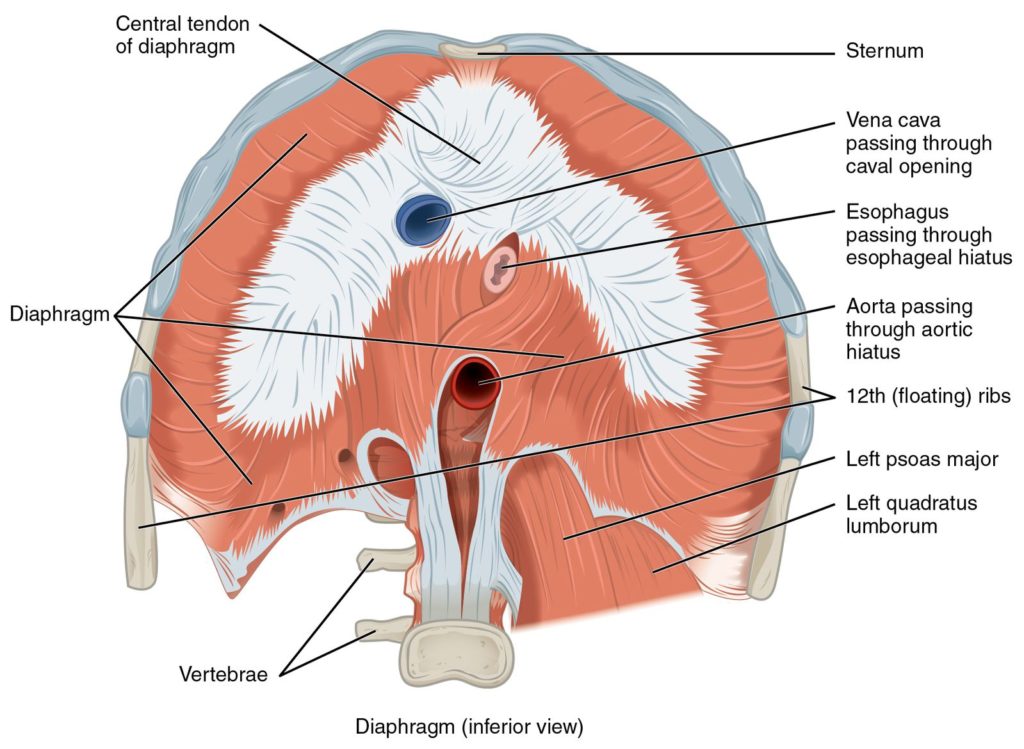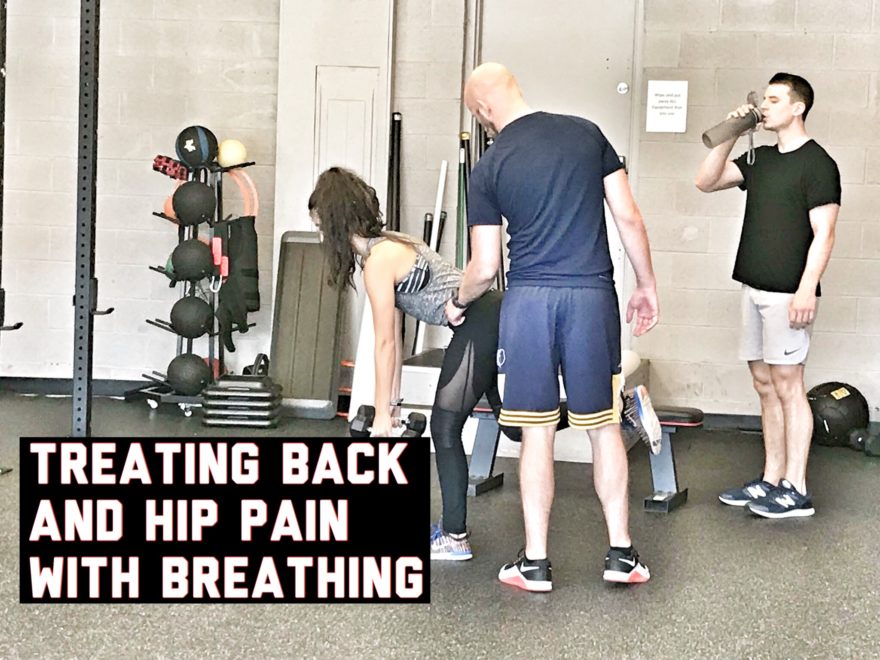Ever have someone who hurts multiple areas, and you are unsure where to start?
What if I told you that if you have a systematic approach, these people can be helped in a much easier manner than you’d think.
But what if your assessment isn’t where you want it to be? Sounds like a problem, fam.
Until now.
Today you’ll see me assess a woman with back and hip pain, and I go through my entire assessment, outline my thought process throughout, and show how I coach this woman out of compensatory activities within her exercises.
All of these are skills that I will be teaching the fam who are attending Human Matrix: The Code for Maximal Health and Performance.
If you want to attend, there are still some sign-ups available for my courses this year:
Kansas City, MO – October 27-28
Some of the cool things you will learn in this case study include
- Why hip rotation is not an immediate decision-maker for exercises
- How to assess joint laxity so clients don’t fool your assessment
- Why is the infrasternal angle important for treatment selection
- How to cue clients out of compensation to enhance exercise effectiveness
- Why we should we see immediate changes after exercise selection
- My favorite manual technique for improving narrow infrasternal angles, which can enhance your client’s overall mobility
- How does the infrasternal angle relate to the infrapubic angle
- and more
Enjoy the video and selected notes below!
Table of Contents
Subjective
Sierra reports having lower back pain and scoliosis, with her left lower back “sticking out” and becoming sore. She also complains of anterior hip pain and right neck tension. She denies any mechanism of injury. She reports seeing chiropractors, manual therapy, and ultrasound for prior treatments.
Aggravating factors
- Prolonged sitting
- Deadlifting
- Deep hip flexion
Explanation
The goal of the explanation was to give Sierra an overview of my approach, and how working at areas away from where she hurts can impact her symptoms.
Examination
The purpose of the standing tests was to find a comparable sign for Sierra; an attempt to find her symptoms. If we make a change in movement with an activity and her symptoms improve, then we have a buy-in and the client wins!
I can’t make any decisions from the standing tests, but it seems as though Sierra is a pretty flexible Chica.
Below were her test results:
| Test | Left | Right |
| Hip Flexion | *full | *full |
| Hip External Rotation | 45°* | 55° |
| Hip Internal Rotation | 55° | 30° |
| Infrasternal Angle | Narrow | |
| Shoulder Flexion | 170° (lax) | 165° (lax) |
| Shoulder External Rotation | 90° | 100° |
| Shoulder Internal Rotation | 90° | 70° |
| Shoulder Horizontal Abduction | 10° (lax) | 10° (lax) |
| Hip Adduction | -20° hip extension | -20° hip extension |
| Hip Abduction | 30° | 20° |
Assessment
Basically, Sierra is a person who has limitations in the thorax (secondary to infrasternal angle) and pelvis (limited extension). She is utilizing an eccentric strategy at joints where laxity is present to “fake” movement in multiple directions.
Our objective is to get her authentic movement in all planes, which ought to reduce overall stress load on Sierra’s body, and potentially help with pain.
My simple procedure: make those areas that are concentrically oriented (hip flexion) eccentric, and make eccentric areas (anterior shoulder) concentric.
Projects Abs and Glutes – Exercise #1
The breathing is taught in a manner to increase expansion in the entire thorax, which can improve upper thorax movement limitations. If the lower ribs are allowed to move anteroposteriorly, this will reinforce superior thorax migration and enhance accessory muscle tone. No bueno
I went with hooklying tilt with pec squeeze to increase hip extension, reduce A-P dimensions with a narrow infrasternal angle, and open up the infrapubic angle.
Below is a video of the activity, though for Sierra I coaches a little bit more shoulder flexion to improve that limitation.
Exercise #1 Results
Below are the changes Sierra exhibited with exercise #1.
| Test | Left | Right |
| Hip Flexion | *full | *full |
| Hip External Rotation | 45°* | 55° |
| Hip Internal Rotation | 55° | 30° |
| Infrasternal Angle | Narrow – slight improvement on right | |
| Shoulder Flexion | 180° (no translation) | 175° (lax) |
| Shoulder External Rotation | 90° | 100° |
| Shoulder Internal Rotation | 90° | 80° |
| Shoulder Horizontal Abduction | 45° (no translation) | 15° (lax) |
| Hip Adduction | -20° hip extension | -10° hip extension |
| Hip Abduction | 30° | 45° |
Many of Sierra’s measures trended in the right direction with that move, but she still lacks hip extension and needs to improve buckethandle capabilities of the ribcage.
Progressive Hip Extension – Exercise #2
I chose the activity below as a means to get Sierra closer to end-range hip extension, while challenging her ability to maintain trunk position by reducing support. The arm overhead position enhances pump handle up position of thorax, which could improve shoulder internal rotation.
Exercise #2 Results
Below are the changes Sierra exhibited with exercise #2.
| Test | Left | Right |
| Hip Flexion | *full | *full |
| Hip External Rotation | 45°* | 55° |
| Hip Internal Rotation | 55° | 30° |
| Infrasternal Angle | Narrow – slight improvement on right | |
| Shoulder Flexion | 180° (no translation) | 175° (lax) |
| Shoulder External Rotation | 90° | 100° |
| Shoulder Internal Rotation | 90° | 85° |
| Shoulder Horizontal Abduction | 45° (no translation) | 45° (no translation) |
| Hip Adduction | -20° hip extension | 0° hip extension, no adduction |
| Hip Abduction | 30° | 45° |
We were able to get full horizontal abduction, shoulder internal rotation looked pretty solid, but as we can see, the left hip is still limited. I’m not satisfied.
Terminal Hip Extension – Exercise #3
I chose the activity below to challenge Sierra at end-range hip extension on the left side, since we did not get a change on that side with #1 & #2. The plank position was used to drive further internal rotation on the right shoulder.
Exercise #3 Results
Below are the changes Sierra exhibited with exercise #3.
| Test | Left | Right |
| Hip Flexion | *full | *full |
| Hip External Rotation | 45°* | 55° |
| Hip Internal Rotation | 55° | 30° |
| Infrasternal Angle | Narrow – further improvements | |
| Shoulder Flexion | 180° (no translation) | 175° (lax) |
| Shoulder External Rotation | 90° | 100° |
| Shoulder Internal Rotation | 90° | 90° |
| Shoulder Horizontal Abduction | 45° (no translation) | 45° (no translation) |
| Hip Adduction | -10° hip extension | Full |
| Hip Abduction | 45° | 45° |
Sadly, I couldn’t get the rest of the left hip to clear, but really good changes on the right hip and in the upper thorax. However, right hip flexion was pain-free, which was pretty exciting
Left Buckethandle Manual Technique
I performed this activity because there was minimal movement of the left portion of the infrasternal angle. My hope was that by getting expansion here, and shifting the spinal orientation subsequently, we’d get an improvement in hip extension on the left.
Manual Technique Result
No changes except hip internal rotation was full without pain. Disappointment sets in 🙁
What if we internally rotate the hips? – Exercise #4
I attempted this technique to further open up the infrapubic angle.
Exercise #4 Results
Left hip adduction became full, but symptoms with hip flexion still persisted.
I discuss the diaphragm’s orientation in this segment. Below is a picture that shows how the diaphragm can pull on the ribcage in a manner that narrows the infrasternal angle.

Sum Up
While not a complete success, we were able to get several movement improvements and relieve some of Sierra’s symptoms. Ideally, I would progress her to more challenging hip extension and shoulder internal rotation stretches.
To summarize
- Infrasternal angle is the key decision-maker
- Having the breathing sequence down is crucial before teaching exercises
- You cannot emphasize hip extension enough
- When exercise fails, manual techniques are warranted
- Always test and retest after an intervention to know where to direct interventions
What was your big takeaway from this case study? Comment below and let us know!

Great Stuff!! You are changing the game. Your the man! Can’t wait for your 2020 Mixtape to come out! #explicitcontent
hahahaah my dude. Don’t worry fam. You get a signed copy #OG
Zac! Awesome stuff! I really liked seeing the entire live tx and your rationale as you progressed through it. My favorite part was seeing some interventions not work as well as hoped, as opposed to just seeing the big/ideal changes, and how you approached those challenges. Sidenote – do Human Matrix attendees get a free signed copy of the mixtape?
Your words are kindly appreciated. I was glad she was a tougher case, as those are the ones you learn from best.
Signed copy of the mixtape and a potential freestyle if you attend 🙂
nice work bro, thanks for that. If the hooklying isn’t gaining the hip extension you are after, would you consider going more to a 90/90 to see if that works? Or do you think it is the narrow ISA that is probably the limiting factor? Chur!